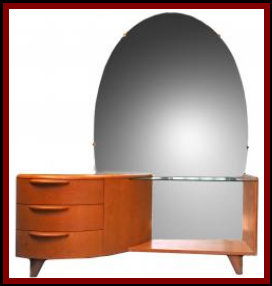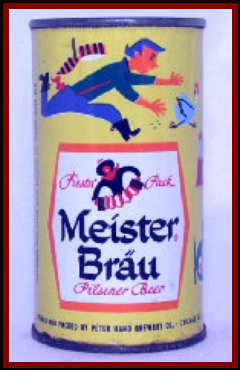













Thank you for your continued support and readership. Please insure to forward this Newsletter to your friends and neighbors. If you no longer wish to receive our emails regarding the update of this page, please send us an email to info@nova-antiques.com with the subject line "OPT OUT"
NOVA-Antiques.com does not run, manage or operate any of the flea markets, auction houses or estate sale companies advertised on this page. The NOVA-Antiques Newsletter is published for the exclusive use, enjoyment and convenience of our readers and subscribers. Any questions regarding the flea markets, auction houses and estate sale companies should be directed to the appropriate owner, promoter or manager.







Upcoming Antique Shows & Flea Markets
NOVA-Antiques.com provides the most comprehensive antiques show and flea market calendar
for the Mid Atlantic region.
Click here to view the most current antiques and collectibles shows calendar . . . > > >
Click here to view our flea
market directory and review pages . . . > > >




Heywood-Wakefield Art Deco Furniture
In the mid-1820’s five brothers with the Heywood surname started a company of the same name
and began producing simple chairs in their barn in Gardner, Massachusetts. Their simple chairs became very popular and demand
grew. A few years later with business flourishing, the brothers branched out into other furniture. As their business continued
to grow, they acquired other smaller furniture companies, but no acquisition was as important as their 1897 acquisition of the Wakefield
Rattan Company. Thus, the Heywood-Wakefield Furniture Company was born.

In the 1930’s, the Heywood-Wakefield company introduced their “Modern Line” which is what most of us are familiar with when we see
Heywood-Wakefield furniture. Designed by the likes of Russel Wright and Gilbert Rhode and other top notch designers, this furniture
is made of solid birch, steam bent and blonde. This furniture was so popular from the mid-1930’s to the mid-1960’s that other
companies started to imitate their color and style and many American homes sported a blonde bedroom at one point or another. However, none is as collectible as the original Heywood-Wakefield furniture.
The Heywood-Wakefield Furniture Company closed operations in the late 1960’s, however in 1992 the South Beach Furniture Company bought
what was left of Heywood-Wakefield and are now producing some of the original designs.
Brewerania - Collecting Vintage Beer Cans
Many different people collect many different things, but if you want to collect beer cans, here are a few things you should know. The first beer cans were used in the mid-1930’s by the Krueger Brewing Company. The beer can was more easily accepted in the United States than in Europe or other countries so European beer cans are harder to find, more desirable by the collector and thus higher priced than their American counterparts.
There are many types of beer
cans, from the flat top which is the most familiar to the people of our generation, to pull tabs and cone tops from the generations
past. Although collecting cans can be fun, one of the disadvantages is that they can take up a lot of space. If you are
a beer can collector or trader, check out the huge collection at: www.beercansandsigns.com

Mikey and his new girlfriend recently decided to purchase a farm in southern Virginia and with this farm
they got a few head of cattle. Noting that the cattle needed a little companionship, Mikey told his girl that he wanted to buy
them a bull. Knowing Mikey, his girlfriend told him, “Why don’t I go out and buy the bull. When I find one, I will call
you and you come on down with the trailer to pick him up.” Mikey agrees and off she goes in search of a bull and she finally
finds one in a remote ranch in North Carolina.
However, the rancher did not have a phone and cell phones are useless in that area. So the rancher told her to go into town
and send a telegram. She says, “great idea” and goes to town. Upon arriving at the Western Union, she asks the guy behind
the counter, “how much to send a telegram?” To which he replies, its 75 cents per word. Her being as cheap as Mikey, thinks
about it for a minute and then says to the man, “okay, send Mikey one word only” and the man asks, “and what word would that be?” She says, “comfortable.” The man looks at her and says, “are you sure your boyfriend Mikey will understand that message.” “Sure,” she says, “Mikey reads so slow that when he gets this out, he will see, COM-FOR-DA-BULL.”

In the mid-1970’s four stained glass medallions depicting important Polish cultural figures,
were stolen from the University of Buffalo, New York. The medallions were painted and glazed by celebrated artist Josef Mazur
in 1955 to hang in the Polish Collection Room of the Lockwood Memorial Library. Of the four medallions stolen, one of Marie
Sklodowska Curie, was recently found. Where else, but on Ebay. A former university student perusing Ebay for Mazur art
found the medallion and immediately notified Jean Dickson, the curator of the Polish Collection at the University of Buffalo. Ms. Dickson contacted the Ebay seller, Greg Lontkowski, who had inherited the medallion. He graciously donated the medallion
back to the collection.
Josef Mazur was born in Poland in 1897 and was an artisan whose stained glass works can be found in many churches, from Philadelphia to Chicago and anywhere in between where Polish populations are concentrated. Hundreds of the artist’s works can be seen in churches throughout the city of Buffalo, New York.

Other works by this artist include the bust of Frederick Chopin that adorns the front of Kleinhan’s Music Hall as well as the life
sized portrait of Polish General Kazimierz Pulaski, the “Father of the American Cavalry,” which hangs in the Pulaski Club in Olean,
New York. Josef Mazur passed in 1970.

Record Auction for Sale Louise Nevelson Sculpture
Many people had questions about how our recent economic slowdown was going to affect
the prices people paid for antiques, collectibles and art. A recent auction sale at Christie’s in New York answered that question
with a resounding . . . no change. Their sale included 333 lots of which 254 sold for over $12 million. Four individual
records prices were set, one of which was for Louise Nevelson’s, Dawn’s Presence Two (1969) which realized a price of $552,000. Pictured to the right, the work is construction of white painted wood spires, previously owned by Schlumberger Ltd.; a Houston based
Oil Field Services Company.